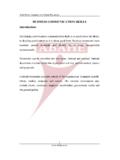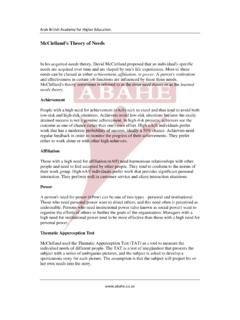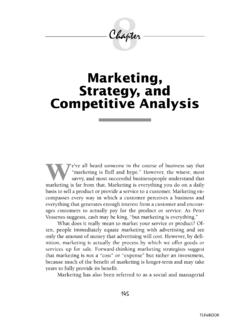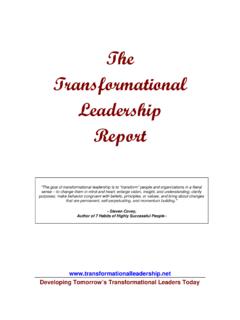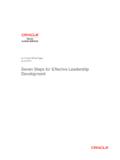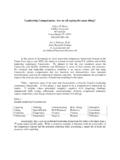Transcription of Leadership and Team Building - ABAHE
1 3 Leadership andTeam BuildingWhat are the qualities of good leaders? What makes themsuccessful? Think of some of the greatest leaders of alltime. What made them stand out from others? We maythink of adjectives such as heroic, charismatic, and strategic. These are all Leadership qualities, but what really makes for a strongand successful leader?Successful leaders are able to influence others. They use their in-nate qualities to inspire a workforce, a team , or a nation to achievegoals. Leaders can see beyond themselves and beyond the task at handto look at achieving long-term goals by utilizing their strengths com-bined with the strengths of others. Effective leaders are able to managerelationships with others and create positive Churchill often comes to mind as one of the greatestleaders in history. He was a talented orator and politician, but whatmade Churchill a phenomenal leader was his ability to mobilize andstrengthen the will of his people through his words and policies.
2 Al-though his strategic actions were often criticized at the time for beingimpulsive, Churchill allowed his belief in democracy and his intoler-ance for fascism to dictate his wartime policies. It was not only his pas-sion for the policies but his ability to carry out his plans that made hima successful , such as that demonstrated by Churchill, is about in-spiring others and doing the right thing. Leaders make change happen,but their values remain steady and unchanging. Most leaders not onlyhave a long-term perspective on goals, but they also have innovativeways of achieving their leaders and business leaders alike can create triumph fromdisasters. Leaders learn from failure and have a steadfastness of pur-pose that keeps them focused on a goal or objective in spite of near-term setbacks or adverse conditions. Leaders are flexible in theirexecution and will make midcourse corrections and iterative improve-ments leaders bend but don t break.
3 They inspire those aroundthem to stretch and do their best to fulfill the organizational are able to energize those around them in order to create de-sired results without compromising their ethical VERSUS MANAGEMENTM anagement is doing things right; Leadership is doing theright things. Peter F. DruckerAlthough sometimes used synonymously, Leadership and managementcan be quite different. Leaders may be managers, but not all managersare leaders. So just what are the differences?While managers tend to have their eyes on the bottom line, lead-ers are more often looking toward the horizon, trying to find new op-portunities for growth and development. A manager is usually satisfiedwith the status quo, whereas the leader is often challenging often involves reinventing the job; strong leaders cre-ate their role in an organization or in the world system. Managers areoften responsible for executing the task at hand, not thinking of futuregoals.
4 Managers are responsible for maintaining, but leaders look to in-novate. Managers may involve employees in their activities, but oftenon a need to know basis. Leaders, in contrast, work to inspire thosearound them by trying to help others gain personal growth and devel-opment from their activities and by turning weaknesses into and team Building39 TLFeBOOKC ompanies that have leader-managers throughout the corporate hi-erarchy are the most OF MANAGERSM anagement is often expressed as the process of achieving an organi-zation s objectives through guiding development, maintenance, and al-locating resources. The primary roles of managers are planning,organizing, leading, and very essence of Leadership is that you have to have can t blow an uncertain trumpet. Theodore M. HesburghPlanning is the process of determining a course of action for futureconditions and events with the goal of achieving the company s objec-tives.
5 Effective planning is necessary for any business or organizationthat wants to avoid costly mistakes. There are four different types ofplanning that are associated with management: strategic, tactical, oper-ational, and contingency planning involves creating long-range goals and deter-mining the resources required for achieving these goals. Strategic plan-ning is the most far-reaching level of planning and involves plans withtime frames from one to five years. Essential to the notion of strategicplanning is that it involves an assessment and consideration of the or-ganization s external environment, and that the organization is adap-tive to these outside, noncontrollable variables, adjusting and possiblyredirecting its strategy to account for this changing planning denotes the implementation of the activities de-fined by the strategic plans. Generally, tactical planning involvesshorter-range plans with time frames of less than one planning involves the creation of specific methods,standards, and procedures for different functional areas of an organiza-tion.
6 In addition, the organization chooses specific work targets andassigns employees to teams to carry out , MANAGEMENT, AND POLICY40 TLFeBOOKC ontingency planning involves the creation of alternativecourses of action for unusual or crisis situations. In today s society,companies are placing greater importance on contingency planning inorder to respond to crisis situations. For example, realizing the impactof terrorism on businesses in the wake of September 11, 2001, manycompanies have developed contingency plans to respond to potentialterrorism management role involves blending human and capital resourcesin a formal structure. The manager will divide and classify work by de-termining which specific tasks need to be carried out in order to ac-complish a set of also have the role of leading or directing employees and managers may be more successful at Leadership than others. Thegoal of leading is to guide and motivate employees in order to accom-plish organizational objectives.
7 This role involves explaining procedures,issuing directives, and ensuring that any mistakes are allows a manager to measure how closely an organizationis adhering to its set goals. It is also a process that provides feedbackfor future performance standards. A company needs to set thestandards by which performance will be measured. In a salesorganization it may be sales growth or quarterly sales the manager will set the dollar amount for sales thatare to be made that performance. Using the previous example, measur-ing performance for sales will require tallying up the numberof sales made during the and team actual performance to the set performance the difference between the set performance sales and thedollar amount of actual sales made during the quarter mustbe the necessary corrective action steps. If the sales weremuch below the set level, it is important to analyze what wentwrong and try to correct information from the process to set future STYLESL eadership is the art of getting someone else to do somethingyou want done because he wants to do it.
8 Dwight D. EisenhowerIndividual managers have their own styles of managing, and within orga-nizations there is often a predominant style of Leadership . The predomi-nant Leadership styles autocratic, democratic, and laissez-faire havemany variations. We can compare and contrast the effectiveness of eachof these styles as it affects employee LeadershipThis style of Leadership is both directive and controlling. The leaderwill make all decisions without consulting employees and will also dic-tate employee roles. Micromanaging is a form of autocratic leadershipin which upper management controls even the smallest tasks under-taken by subordinates. The autocratic style of Leadership limits em-ployee freedom of expression and participation in the decision-makingprocess. It may result in alienating employees from Leadership and willnot serve to create trust between managers and subordinates. Further,creative minds cannot flourish under autocratic Leadership may best be used when companies are man-aging less experienced employees.
9 Companies operating in less de-veloped countries often use autocratic Leadership . It allows the parentcorporation more control over its overseas investment. In countriesPEOPLE, MANAGEMENT, AND POLICY42 TLFeBOOK where the government controls the economy, corporations often useautocratic Leadership because the employees are used to making deci-sions to satisfy the goals of the government, not the parent should not use the autocratic Leadership style in opera-tions where employees expect to voice their opinions. It also shouldnot be used if employees begin expecting managers to make all the de-cisions for them, or if employees become fearful or LeadershipThis style of management is centered on employee participation andinvolves decision making by consensus and consultation. The leaderwill involve employees in the decision-making process and they will beencouraged to give input and delegate assignments.
10 Democratic lead-ership often leads to empowerment of employees because it gives thema sense of responsibility for the decisions made by management. Thiscan also be a very effective form of management when employees offera different perspective than the manager, due to their daily involve-ment with work. A successful leader will know when to be a teacherand when to be a Leadership may best be used when working withhighly skilled and experienced employees. It is most useful for imple-menting organizational changes, for resolving group problems, andwhen the leader is uncertain about which direction to take and there-fore requires input from knowledgeable employees. One of the down-sides of democratic Leadership is that it may lead to endless meetingsand therefore create frustration among employees if used for every de-cision made by a company. Democratic Leadership is not a good idea insituations when the business cannot afford to make mistakes for in-stance, when a company is facing a crisis situation such as LeadershipDelegating work works, provided the one delegating works, too.


